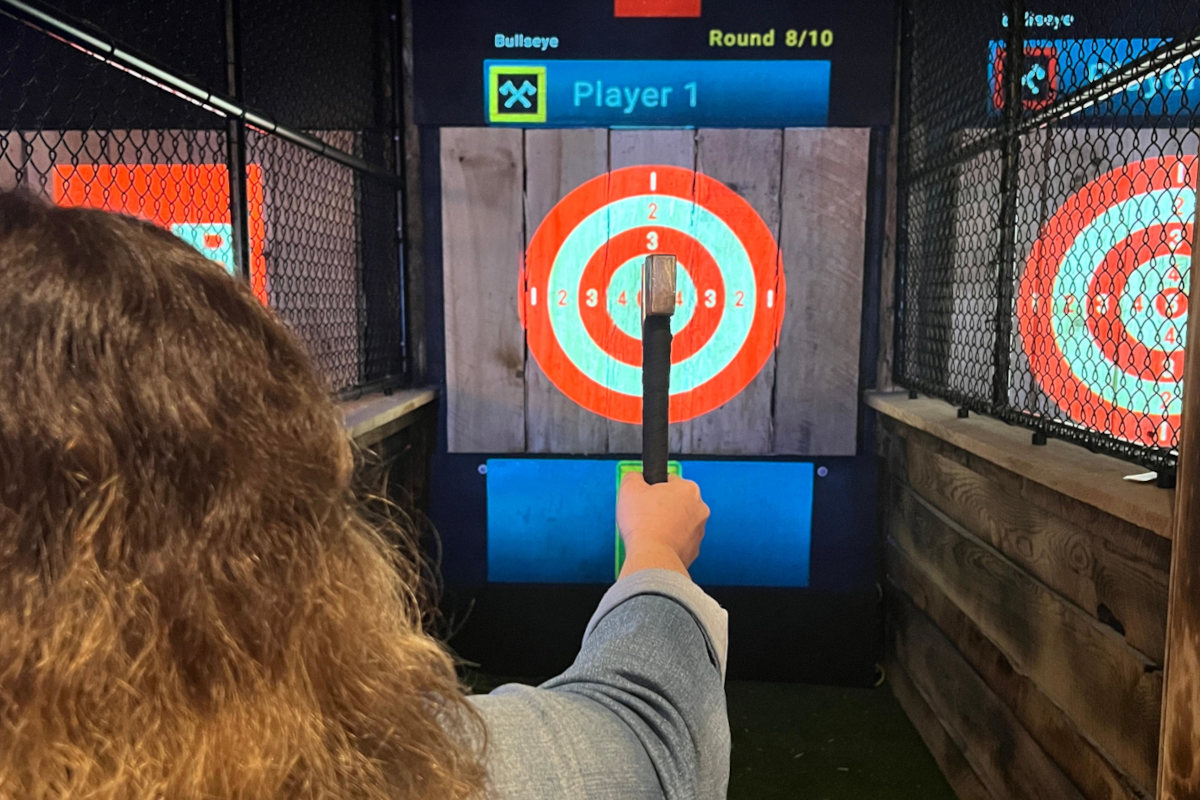The Enjoyable of Axe Throwing: Exactly How This Sporting Activity Integrates Ability and Adrenaline for a Blast
Axe throwing has actually emerged as a mesmerizing sport that masterfully links the requirement for precise ability with the rush of adrenaline, offering participants a appealing and one-of-a-kind experience. The act of hurling an axe in the direction of a target demands concentration and strategy, simultaneously cultivating an ambience of camaraderie and pleasant rivalry.
The Origins of Axe Throwing
Axe tossing, a leisure activity that has actually acquired considerable appeal in recent years, traces its origins back to old times. The earliest records of axe use in affordable contexts are discovered amongst the Celts and Vikings, who threw axes for sport as well as in combat training.
Medieval European warriors, specifically throughout the Center Ages, practiced axe tossing as component of their martial training. The Francisca, a sort of throwing axe made use of by the Franks, became renowned for its lethal precision. This traditional tool was made to be tossed at adversary guards and armor, showcasing its double energy in both sporting activity and battle.
In more recent history, axe throwing saw a rebirth in the logging camps of North America in the 20th and 19th centuries. Lumberjacks would involve in friendly competitors, examining their precision and strength by aiming at wooden targets. This evolution from a survival skill to a leisure task has paved the means for its contemporary resurgence, with committed locations and leagues now celebrating the sporting activity worldwide.
Tools You Required
Understanding the abundant background of axe throwing enhances the admiration of the sporting activity's contemporary model. Central to this thrilling task is the tools, which is necessary for both safety and efficiency. The main device is, naturally, the axe. For competitive and recreational axe throwing, one of the most typically utilized type is the hatchet, usually weighing between 1.25 to 2 pounds with a take care of size of about 16 inches. The axe ought to have a sharp, well-kept blade and a manage made from sturdy wood or composite material, making certain a good hold and balance.
Similarly important is the target. Law targets are created from wood, with softwood varieties like want or cottonwood being preferred for their ability to soak up and hold the axe. The target is generally split right into 5 concentric circles, each with a specific factor value, to facilitate scoring.
Safety equipment, however frequently ignored, is critical. Protective gloves can boost hold and protect against blisters, while closed-toed shoes are a must to safeguard feet from dropped axes (ax throwing denver). A well-lit, spacious tossing location, full with safety barriers, makes certain a controlled setting where participants can focus on honing their skills.
Standard Techniques Discussed
Understanding the basic methods of axe throwing is vital for both safety and security and proficiency. The leading hand must be positioned directly below the axe head, while the non-dominant hand sustains the end of the take care of.
Your leading foot must be slightly onward, aligning with your target. This positioning help in maintaining stability and directing power precisely towards the target.

Security First
Making sure safety and security in axe throwing is paramount to creating an injury-free and enjoyable experience. Safety determines start with the place format. A well-designed axe throwing facility attributes clear demarcations in between throwing lanes, durable backgrounds to capture stray axes, and non-slip floor covering to stop mishaps. In addition, sufficient lighting is essential to aid individuals maintain visual accuracy and spatial understanding.
Advantages of Axe Throwing
Axe tossing deals a myriad of benefits that prolong past straightforward leisure. The repeated motion of tossing the axe additionally boosts hand-eye coordination and great motor skills.
Psychologically, axe tossing calls for focus, strategy, and accuracy, making it an exceptional over here method to hone cognitive abilities. The focus needed to strike the target can work as a form of mindfulness, allowing individuals to remove their minds and decrease anxiety. This mental involvement can be particularly valuable in assisting individuals develop much better problem-solving abilities and mental resilience.
Socially, axe throwing is typically enjoyed in team setups, promoting team-building and camaraderie. Whether as part of a company event or a laid-back getaway with close friends, the sport encourages interaction and collaboration. In addition, the common experience of finding out and enhancing with each other can strengthen connections and produce lasting memories.
Final Thought

The earliest records of article source axe use in affordable contexts are discovered amongst the Celts and Vikings, who threw axes for sporting activity as well as in battle training. Launch the axe when your hands are about at eye degree, enabling the axe's all-natural rotation to lead it in the direction of the target.
A well-designed axe throwing facility functions clear demarcations in between tossing lanes, sturdy backdrops to catch roaming axes, and non-slip flooring to avoid accidents. Participants should be advised on the right means to take care of and toss the axe, stressing regulated, deliberate movements over forceful throws.
In recap, axe throwing stands out as a sport that masterfully weblink incorporates skill, precision, and adrenaline.